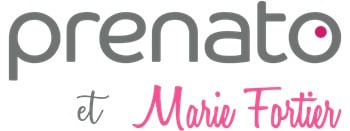If you want to learn more about manual breast pumps, go to Manual Breast Pumps.
If you want to increase or maintain your production and are having difficulty, don’t want to use a manual breast pump, want extraction to be easier (and fastier: takes half of the time), or give bottles regularly (more than 3-4 per week) or if you want to stock your milk to give over time , choose an electric breast pump.
Single Electric Breast Pump (one breast at a time)
This can be an option if you want to pump milk or give bottles occasionally. The power of this kind of breast pump does not allow you to maintain and significantly increase milk production over the medium and long term. When it comes to stimulating the brain to produce more milk, we know that pulling both breasts at the same time gives more results than pulling one breast after another. Therefore, when a baby is not able to suckle and start production initially, the new mother may be suggested to use a double electric breast pump to start lactation. It’s the baby who will be responsible for maintaining their mother’s milk production.
The benefits of a single electric breast pump:
This kind of pump is compact and easy to use. Its power and frequency are controlled by the mother, so it is faster and less tiring than a manual breast pump.
Double Electric Breast Pump (either: one breast or both breasts at the same time)
It is designed to maintain or increase the mother’s milk production. The extraction time is shorter, between 10-15 minutes (max 20 minutes). Given its traction strength, the mother can expect to pump more milk than with a single electric breast pump. The breast stimulation obtained can, in a way, imitate the baby’s sucking.
 Among its characteristics, we can note:
Among its characteristics, we can note:
- Technologies that allow you to have control over the setting of the sucking and relaxation rhythm that more closely mimics a baby’s breastfeeding,
- movements in detached phases, like stimulation and expression afterwards,
- micro-vibrations technology to further stimulate the milk cavity,
- and have a nipple shield that is adapted to the morphology of the breast of the woman who is expressing her milk in order to maximize the effectiveness of the breast pump.
The benefits of double electric breast pumps:
A double electric breast pump also allows you to extract milk from the deeper part of the mother’s breast, which increase the breast draining quality with a higher energy content for the baby. It also helps maintain production at the same time. However, make sure the suction is not too strong and too long, because this can damage the mother’s nipples.
It is also convenient. For example, if a mother gives birth to twins, she doesn’t have a lot of time, and we want the best stimulation possible to help follow her babies’ pace. The double breast pump cuts the time needed for stimulation and extraction in half (it should never be more than 20-30 minutes).
A premature baby who has difficulty sucking will not stimulate their mother in the same way as a term baby, whose suction will be stronger. In this instance, the double electric breast pump can substitute or complement the baby’s sucking for a time, and it will also stimulate more milk production for her baby.
Some mothers don’t want to have a baby latched to their breast but want to give them their milk. In this instance, a double breast pump is necessary, because the baby will not stimulate and maintain production.
Some double electric breast pumps are more compact, portable, easier to use, lighter and more powerful than others. The latest models also allow you to recharge lithium batteries (like a cellphone), store programs, function hands-free and have digital screens. Everything for technologically advanced parents! 😊
Maintenance:
You have to follow the manufacturer’s instructions since each model is different.
To learn about the characteristics of professional breast pumps, go to the next part, Professional Grade Breast Pumps (rentals).



